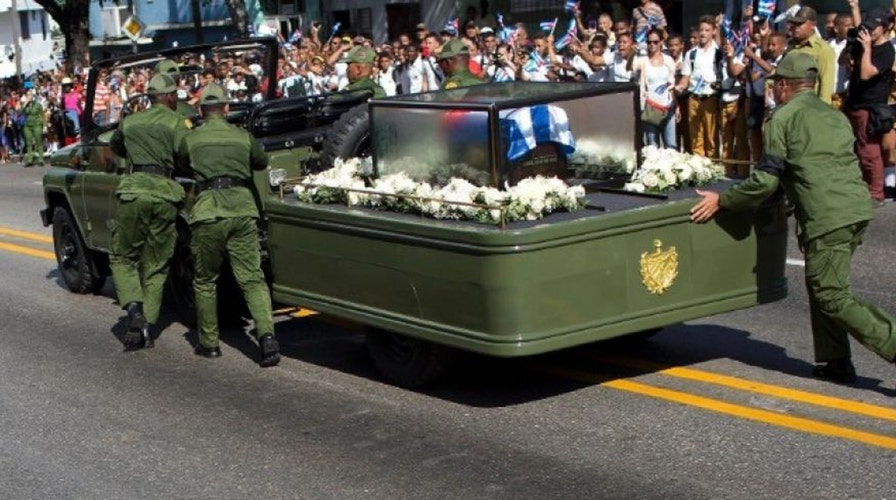Fidel Castro buried in the city of Santiago
Private ceremony ends nine days of public mourning
Cuban dictator Fidel Castro's ashes were interred in a private ceremony Sunday morning, ending nine days of official mourning.
The Russian-made jeep ferrying Castro's ashes broke down and needed to be pushed on Saturday en route to the late leader's final resting place.
The breakdown of the jeep in the midst of adoring crowds chanting "Long live Fidel!" was symbolic of the dual nature of Castro's Cuba. While his legacy inspires fierce adulation by many of the nation's citizens, others continue to grumble about Cuba's autocratic government, inefficient bureaucracy and stagnant economy.
Related stories...
Rural Cubans' lives have improved with the arrival of doctors and teachers in once-ignored backwaters, but it has been a struggle to earn a living under the island's one-party socialist government and its stifling economic rules.
But those realities were seemingly not at the forefront for the throngs crowding the 2-mile route the Russian jeep traveled to Santa Ifigenia cemetery.
Castro's tomb stands to the side of a memorial to the rebel soldiers killed during a 1953 Castro-led attack on Santiago's Moncada barracks. Castro's final resting spot is in front of the mausoleum of Cuban national hero Jose Marti.
The Cuban military fired a 21-gun salute and crowds at the entrance to the cemetery sang the national anthem as the ashes entered about 40 minutes later. The ceremony lasted more than an hour and took place out of the public eye after Cuban officials made a last-minute cancellation of plans to broadcast the events live on national and international television. International media were also barred from the ceremony.
The decision to hold a private ceremony came the morning after Castro's brother, President Raul Castro, announced that Cuba would prohibit the naming of streets and monuments after the former leader, and bar the construction of statues of the former leader and revolutionary icon, in keeping with his desire to avoid a cult of personality.
"The leader of the revolution rejected any manifestation of a cult of personality and was consistent in that through the last hours of his life, insisting that, once dead, his name and likeness would never be used on institutions, streets, parks or other public sites, and that busts, statues or other forms of tribute would never be erected," Raul Castro told a massive crowd gathered in the eastern city of Santiago.
He said that Cuba's National Assembly would vote in its next session on the law fulfilling the wishes of his brother, who died last week at 90. The legislature generally holds a meeting in December and under Cuba's single-party system, parliament unanimously or near-unanimously approves every government proposal.
Fidel Castro, who stepped down in 2006 after falling ill, kept his name off public sites during his near half-century in power because he said he wanted to avoid the development of a personality cult. In contrast, the images of his fellow revolutionary fighters Camilo Cienfuegos and Ernesto "Che" Guevara became common across Cuba in the decades since their deaths.
The Associated Press contributed to this report.

